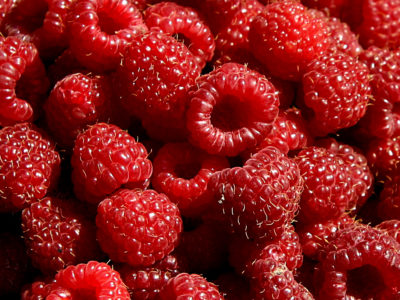Raspberries are the bright red berry that are in the same family, rosaceae or “rose family” as blackberries. Did you know that the world’s biggest producer of raspberries is Russia? Me neither! We are lucky to be able to get the majority of our raspberries within our own country (mostly, the Pacific Northwest). These convenient fruits are easy to eat by the handful, and I also love using them in my baked goods!
Like other berries, raspberries are a great source of fiber without much sugar (about 5g per 100g). As far as micronutrients go, they are most rich in vitamin C, providing about 32% of your RDV, and manganese (also 32% of RDV), but the remaining nutritional content is otherwise trace amounts. The seeds in raspberries also contain some nutrition, including protein, fiber, carotenoids, ellagitannins, and ellagic acid, so don’t skip out on the seeds! Raspberries are also extremely high in antioxidants like polyphenols, flavonoids, and anthocyanins (those actually give them their red color!). You might see yellow raspberries around, which have a slightly different antioxidant profile: mostly, they are lower in those anthocyanins.
Raspberries need time to ripen, so they’re most likely to be in season after summer starts and continue to produce until early fall. If you live somewhere where raspberries are local, the wild varieties are more likely to have higher concentrations of micronutrients and antioxidants. Raspberries can also be found at your local farmers’ market or grocery store.


 Blackberries
Blackberries